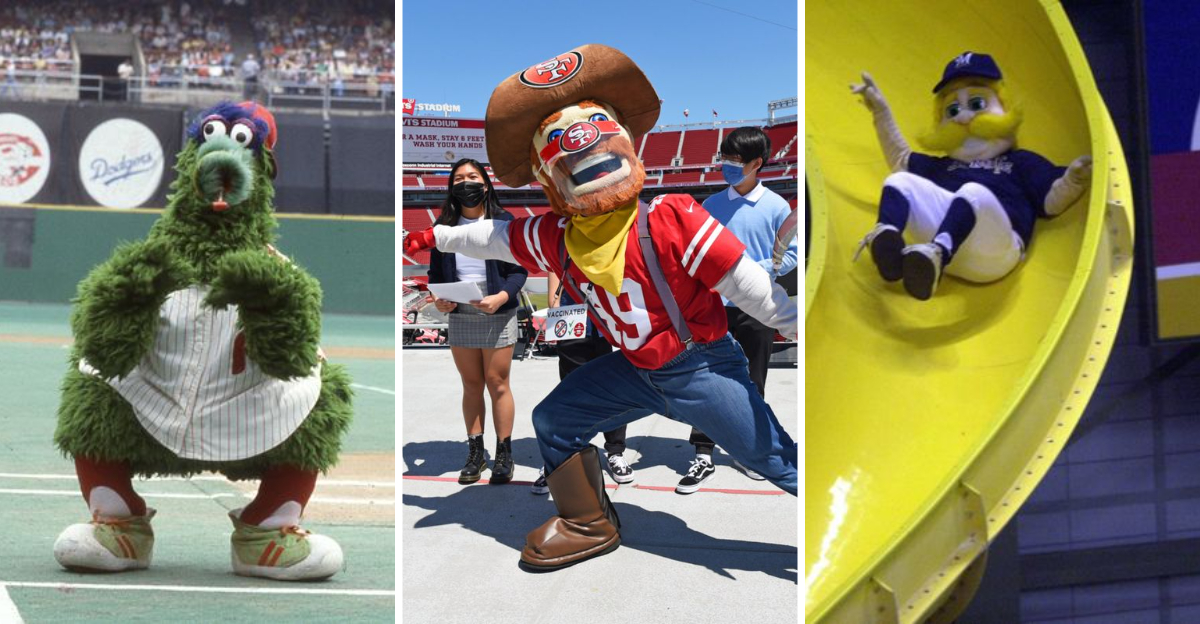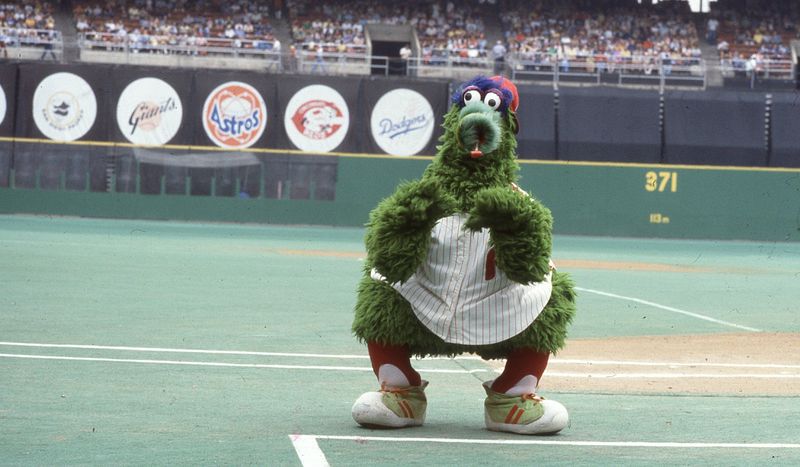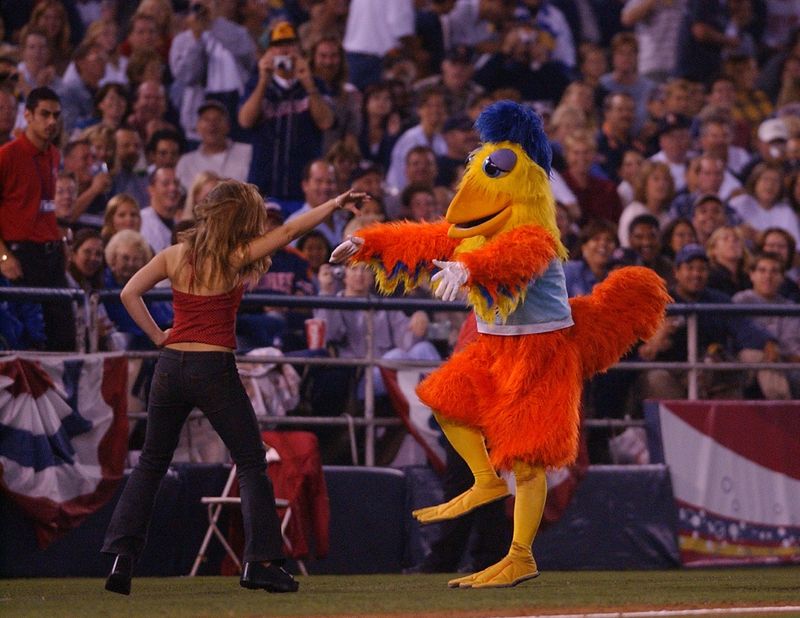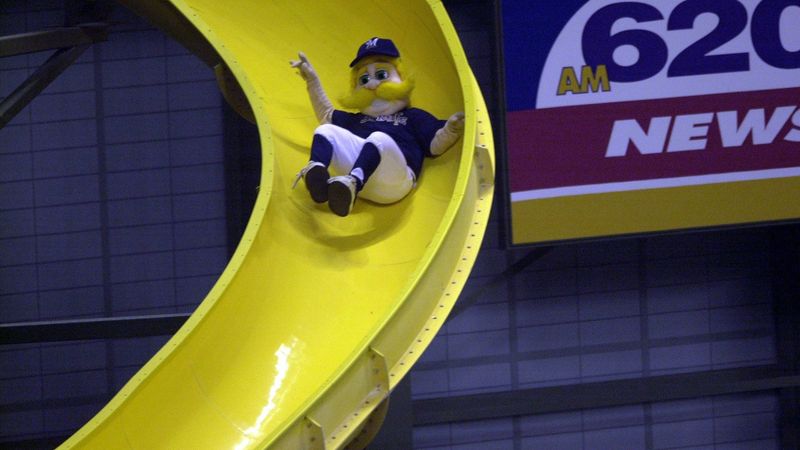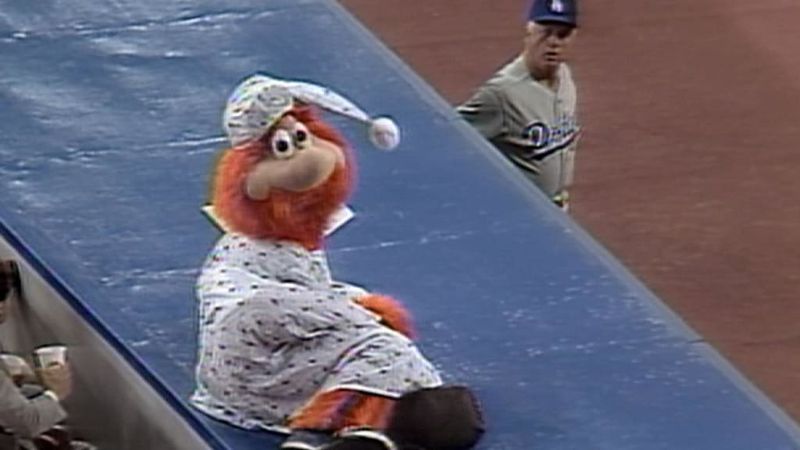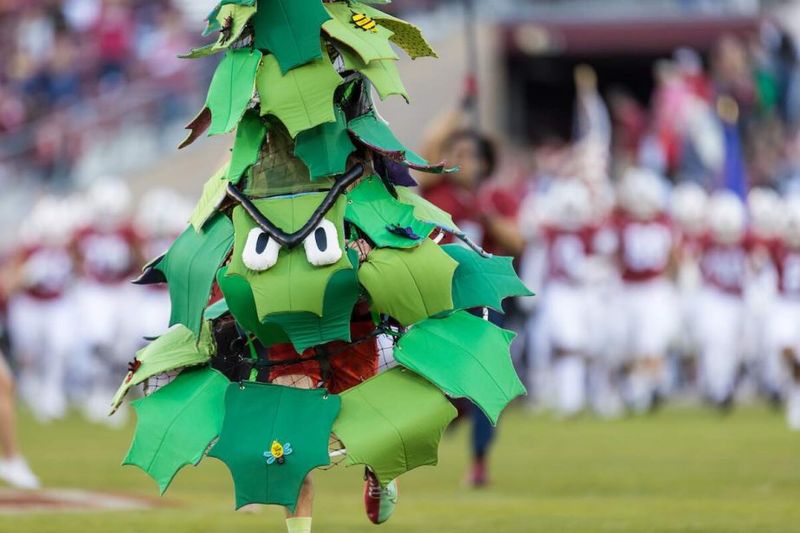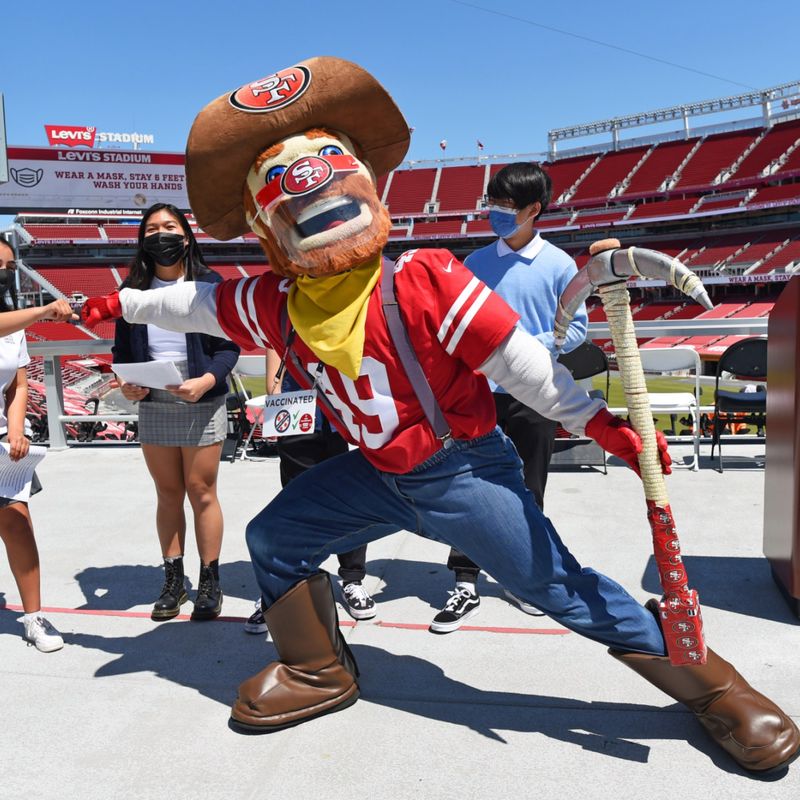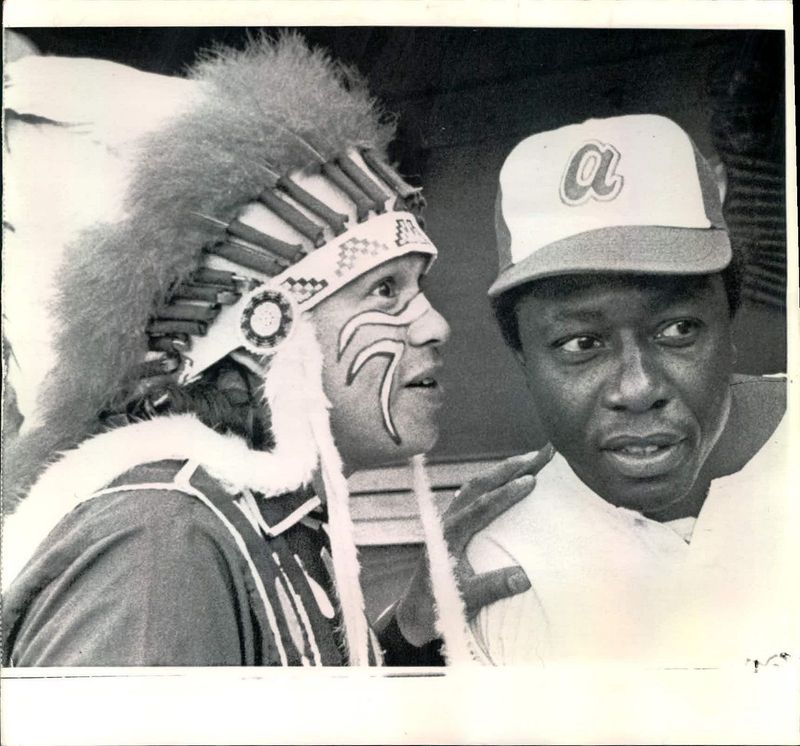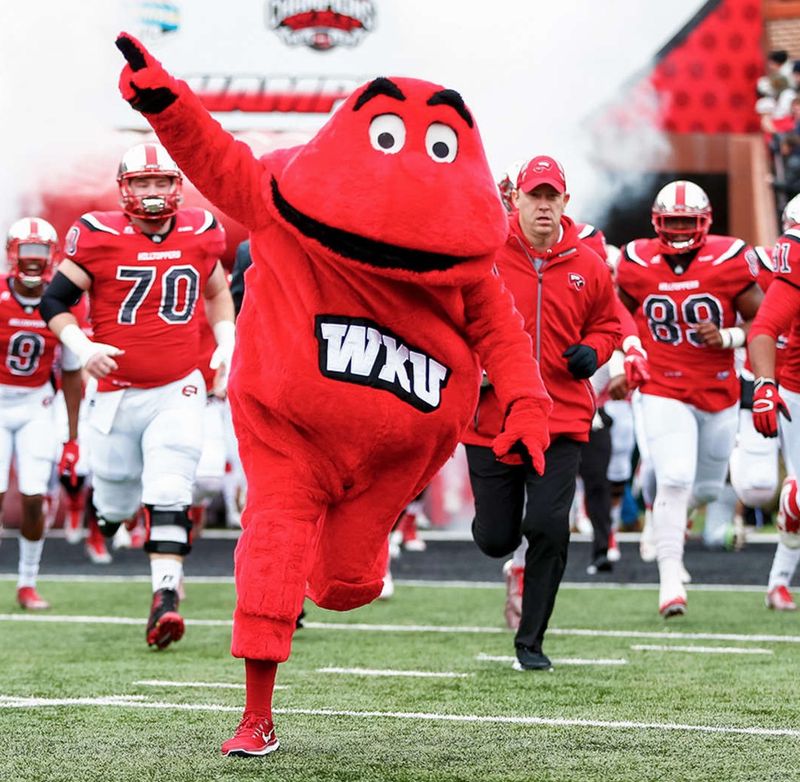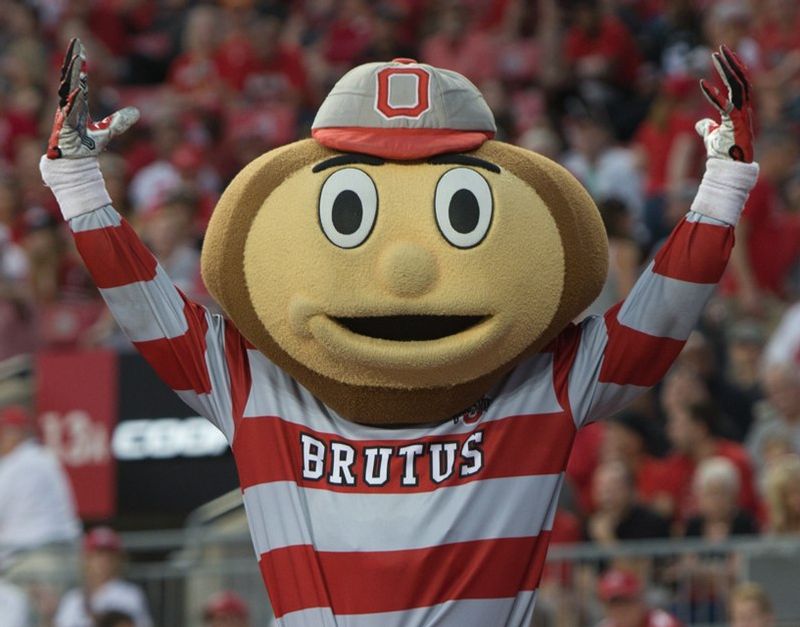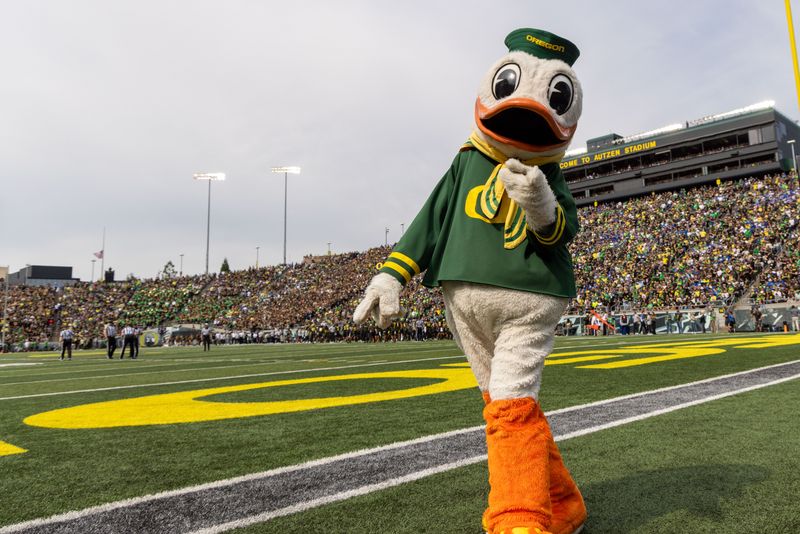The 1970s marked a golden age for sports mascots. Teams across America embraced colorful characters that transcended their role as sideline entertainment to become beloved civic symbols. These fuzzy, feathered, and sometimes furry personalities didn’t just pump up crowds—they became cultural touchstones that generations of fans rallied behind.
1. The Phillie Phanatic: Philadelphia’s Green Goofball
When a seven-foot, flightless green bird with an extendable tongue waddled onto Veterans Stadium in 1978, Philadelphia found its perfect mascot personality. Created by Muppets designers, the Phanatic embodied the city’s irreverent spirit.
His ATV-riding antics and playful mockery of opposing players transformed mundane baseball games into theatrical experiences. The Phanatic didn’t just entertain—he became Philadelphia’s fuzzy ambassador, eventually earning induction into the Mascot Hall of Fame.
2. The San Diego Chicken: From Radio Stunt to National Icon
Nobody expected a radio station promotion to hatch sports history. Ted Giannoulas, the man inside the feathered suit, transformed a temporary gig into mascot stardom beginning in 1977.
His slapstick humor—mocking umpires, performing parodies, and hamming it up with players—made him bigger than the Padres themselves. Sports Illustrated crowned him one of the 100 most influential people in sports. The Chicken didn’t just entertain San Diego; he revolutionized how teams approached fan engagement forever.
3. Bernie Brewer: Milwaukee’s Mustachioed Slide Master
Bernie began not as a costume but as real-life superfan Milt Mason, who lived in a trailer atop County Stadium’s scoreboard in 1970. The Brewers later created a mascot inspired by his dedication.
Bernie’s signature move? Sliding from his chalet into a giant beer mug after Brewers home runs. Though temporarily retired in 1984, fan outcry brought him back. His bushy mustache and lederhosen perfectly captured Milwaukee’s German heritage, making him the embodiment of the city’s brewing tradition.
4. Youppi!: Montreal’s Orange Ambassador
With bright orange fur and a permanent smile, Youppi! bounded onto Olympic Stadium’s turf in 1979, becoming the heart of Montreal Expos baseball. His name—French for “Yippee!”—perfectly matched his exuberant personality.
Youppi! made history as the first mascot ever ejected from a Major League game after antagonizing an umpire. When the Expos left town, Montreal couldn’t bear losing their fuzzy friend. In an unprecedented move, the NHL’s Canadiens adopted him—making Youppi! the only mascot to switch professional sports leagues.
5. The Stanford Tree: College Sports’ Weirdest Tradition
Not every legendary mascot was professionally designed. Stanford’s Tree began in 1975 as a satirical response to the university’s refusal to adopt an official mascot after abandoning the controversial “Indians” name.
Each year, a new student creates their own interpretation of this bizarre, googly-eyed redwood. The Tree gained notoriety for outrageous behavior—including arrests for public intoxication during games. Despite (or because of) its amateur construction and unpredictable antics, this absurd foliage became a beloved symbol of Stanford’s quirky spirit.
6. Sourdough Sam: Gold Rush Fever in San Francisco
Born in 1974, Sourdough Sam brought San Francisco’s gold-panning history to life at 49ers games. With his prospector’s beard, floppy hat, and boundless enthusiasm, Sam embodied the frontier spirit of the team’s namesake.
While other mascots relied on outlandish stunts, Sam’s folksy charm and gold rush persona connected fans to the city’s historical roots. His gold pan and pickaxe became symbols as recognizable to Bay Area sports fans as the Golden Gate Bridge. Sam proved that sometimes the most effective mascots are those grounded in local heritage.
7. Chief Noc-A-Homa: Atlanta’s Controversial Spirit
Perhaps no ’70s mascot reflects changing cultural attitudes more than Chief Noc-A-Homa. From 1969 until 1986, this Atlanta Braves tradition featured a person dressed in Native American attire who emerged from a teepee to perform dances after home runs.
Many fans cherished the Chief as team tradition. His teepee in the left-field stands became so associated with wins that fans protested when it was temporarily removed. Though beloved by many Atlantans, the mascot eventually retired amid growing recognition of cultural sensitivity issues—a reminder of how mascot traditions evolve with societal awareness.
8. Big Red: Western Kentucky’s Amorphous Phenomenon
Sometimes the strangest concepts make the most memorable mascots. Big Red, born in 1979, defied categorization—a bright red, furry blob with googly eyes and an enormous mouth that could swallow a student’s head whole.
Despite having no connection to Western Kentucky’s “Hilltoppers” nickname, this bizarre creation became an instant sensation. Big Red communicated solely through exaggerated gestures and hugs. The mascot’s undefined form allowed for incredible physical comedy—belly-sliding across courts and engulfing small objects. This lovable oddity proved that mascots needn’t make logical sense to win hearts.
9. Brutus Buckeye: Ohio’s Beloved Nut
Few mascots embody their state’s identity like Brutus Buckeye. Debuting in 1965, Brutus truly came into his own during the 1970s when his massive papier-mâché head evolved into the more athletic costume we recognize today.
As Ohio’s state tree, the buckeye transformed from simple nut to anthropomorphic cheerleader. Brutus became famous for his push-ups matching Ohio State’s score after touchdowns—no small feat with that oversized noggin! His perfectly round head and infectious enthusiasm made him the Big Ten’s most recognizable sideline character and a symbol of Ohio pride.
10. The Oregon Duck: Disney-Licensed Webfoot Wonder
Most college mascots are original creations, but Oregon’s Duck boasts a unique Hollywood pedigree. Though first appearing in the 1940s, the Duck hit his stride in the 1970s with a formal Disney licensing agreement allowing him to resemble Donald Duck.
Known for his legendary push-up contests—one for each point scored—the Duck occasionally collapsed from exhaustion during high-scoring games. His notorious feud with the Stanford Tree produced some of college sports’ most absurd mascot confrontations. This web-footed wonder proved that with the right personality, even a cartoon character could become a regional icon.
